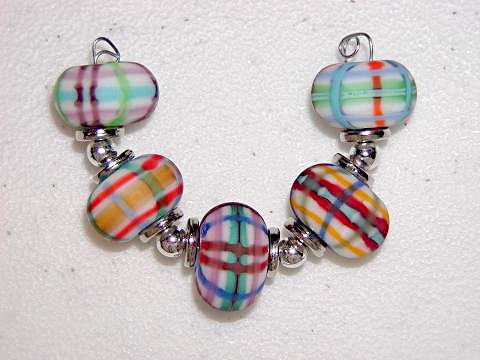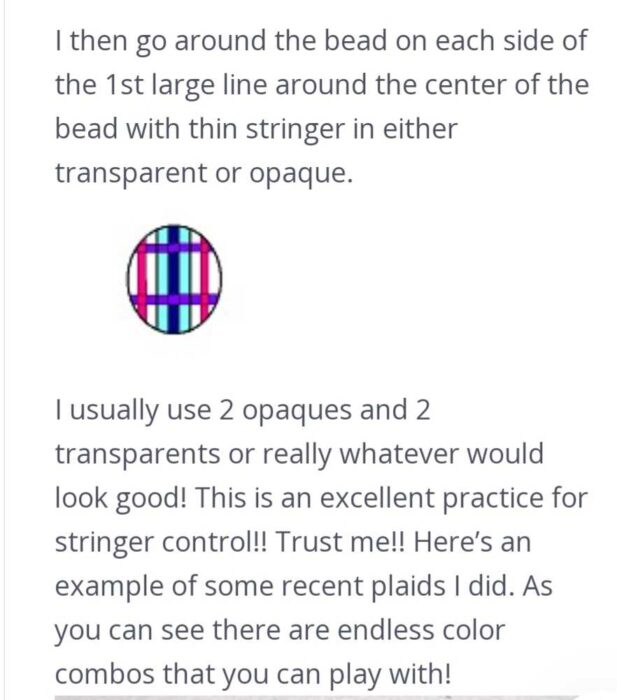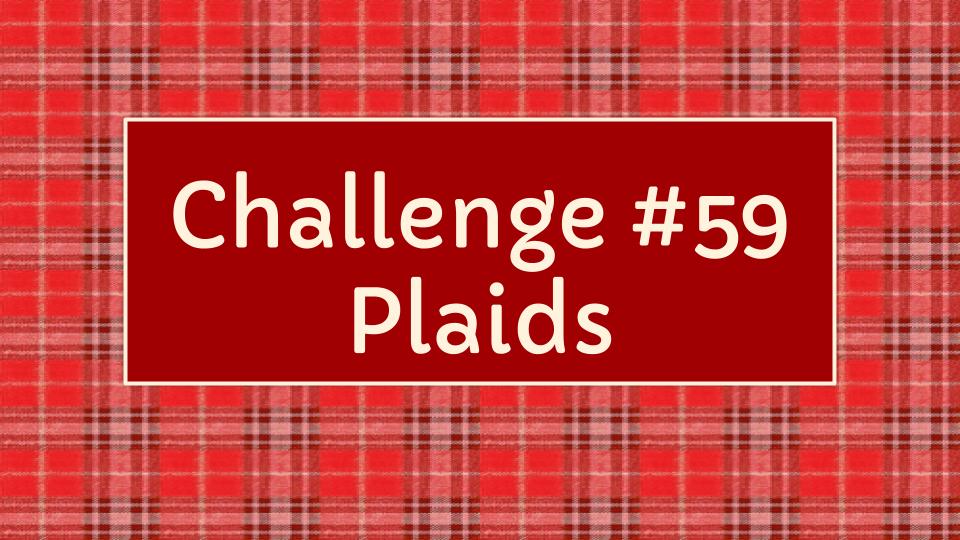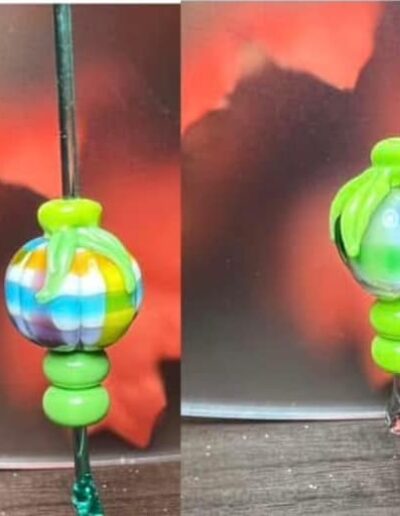Ongoing Challenge No. 59
“Plaids, Tartans & Checks”
By Lilli Berry
The Dragon’s theme for March is Plaids, which makes me think of tartan – and checks. That led me to explore the differences. What are plaids, tartans, and checks? “Plaid” is from Scottish Gaelic “plaide” meaning “blanket”. In America, we use plaid to describe a pattern associated with Tartan (from French “tartaine”- meaning checkered cloth) Tartans are used to distinguish Scottish clans. Each clan has its own unique colors and pattern to represent it. In Ireland, Tartans are more regional than clan specific. Tartan [textile, fabric] is used for kilts, and other traditional wear (in UK plaids are the draping long rectangular tartan worn over the shoulder in kilt formal wear.), scarves, wraps, blankets, and upholstery uses.
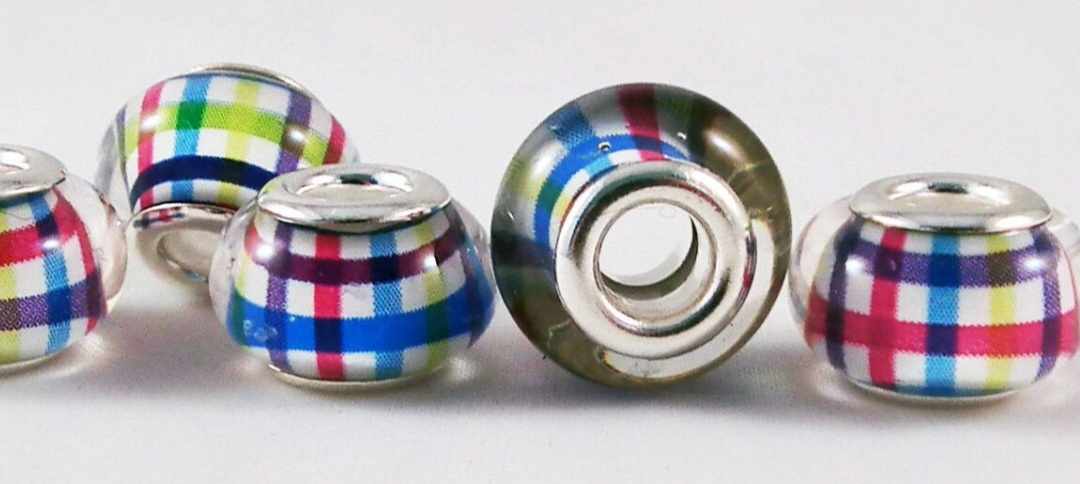
Plaids, tartans, and checks come in so many styles, and they can be incorporated into glass beads too. Stringers make it a little more easy to lay down straight lines. Use different widths of stringers, opaques and transparents in different colors to vary the lines, both warp and weft. The base bead color will probably be the main color, or at least the most showing. If you like the complicated tartan patterns, dont worry that the lines don’t exactly match it on the bead. Using the same colors gives it the representation of that tartan. Endless color combinations are possible, but I suggest to start with using two opaques and 2 transparents on a light background, with three horizontal lines and 6 vertical ones. Where you put these lines, will give different patterns–some can be equidistantly placed, or some in pairs or triples. Remember to repeat your pattern all around the bead. Try different shaped beads other than donuts and rubes, too.
Here are some pattern samples, and a mini graphic tutorial by Anne Ricketts (AMR Glassworks) on the Wetcanvas.com forum. “Anne’s Plaid Bead Tutorial,” Wetcanvas.com.
Please share your entries below. We love to see what you are creating! Happy Torching!!
Plaids and their cousin checks (“checkered” or “boxed”), are a pattern of weaving made on a loom using different colors and specific patterns. The lengthwise threads , or “warp” is laid in a specific straight vertical pattern and the horizontal “weft” is filed in to form right angle or boxed patterns. Checks are two-color, same sized boxed patterns ( think a checkerboard), which can include gingham (think Wizard of Oz Dorothy’s famous blue and white dress), the red and black Buffalo Plaid (think highly-visible lumberjack”s shirts, and the now ubiquitous Christmas-time deco), black and white houndstooth (think chef’s pants), and Glen Check (think Sherlock Holmes.)
Tartans are usually made of several different colors on a main field of background color and repeated specific horizontal and vertical stripe combinations, creating a unique fabric for each clan or region. Three of the most highly recognizable ones are the Royal Stewart – Queen Elizabeth’s chosen red and multi-colored thin stripe tartan; the navy blue and green Black Watch-the most commonly worn tartan in the world; and the popular tan and black Burberry Check.
The modern Madras Plaid is the most colorful of plaid patterns, named after the district in India it originated from. They are usually made of several bright, vibrant colors, usually on light backgrounds, and are used in more “summery” garments, reflecting the lighter tones and feel (think preppy Mad Men in Ralph Lauren & Brooks Brother’s.)
